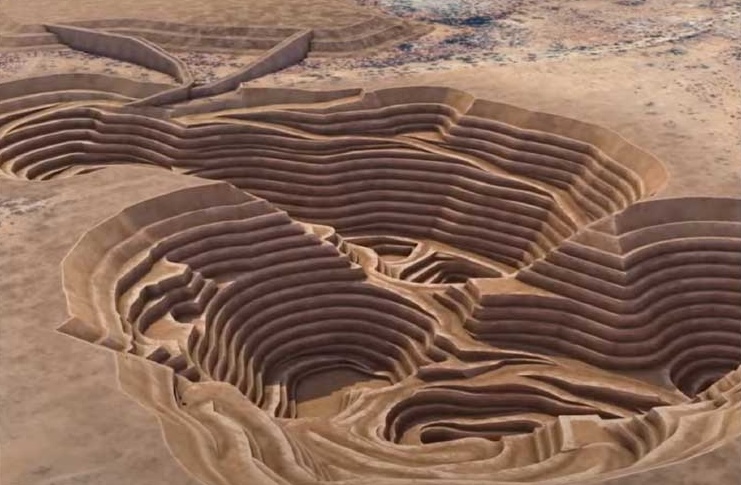Who will guarantee the ‘offtake’ for Australia’s rare earths mining boom? Jude Manning on the prospect of a China price war and long-term government subsidies.
Anthony Albanese got plenty of media fanfare this week for a successful visit to Washington, despite some bizarre hysteria over a pretty good humoured exchange between Trump and Ambassador Kevin Rudd. The deal involved AUKUS and critical minerals, where they announced joint funding for projects in Australia and the US to diversify supply chains away from China.
No sweat on AUKUS, unsurprisingly, although apparently the deal needed ‘shoring up’. The King has made a habit of squeezing his allies lately, so Trump waving the subs deal through without so much a second glance tells you everything you need to know about how good that deal is, for him.
Critical Minerals
The “substance” was in critical minerals. The “$US8.5 billion deal” really involves only an $US1B commitment from each country to kickstart projects in the US and Australia. The $US8.5B figure speculates on the value of the projects, and anticipates private sector funding to make up the $US6.5B gap. A cynic might suggest the US and Australia have agreed to spend $1USB each in their own critical minerals industries.
Two projects here in Australia have been confirmed: $307m in the Alcoa-Sojitz Gallium refinery, and $153m for Arafura’s Nolans Rare Earths Project – with nine others receiving interest from the US and Australian governments, including upgrades to Nyrstar’s Port Pirie smelter to produce Antimony.
Hand-up or handout? Govt to support scandal-plagued toxic metals maker
Rare earths are a subset of critical minerals which refer to 17 elements with similar optical, magnetic and electrical properties. Contrary to their name, they are not particularly rare. They exist in low concentrations across the globe, but are difficult to extract in large quantities.
Rare earths are essential for any advanced manufacturing, from solar panels and wind turbines, to jets, data centres, and oil refining.
The aim of the deal is to break China’s stranglehold on critical minerals, and specifically rare earths mining and processing. China currently makes up about 70% of rare earth mining, and 90% of global processing. The deal comes as a response to China imposing restrictions on a proliferation of its rare earths, or products containing them, accelerating fears of Chinese economic coercion.
Benefits for Australia
Tim Buckley, director of Climate Energy Finance, was optimistic about the deal, and argued Australia should leverage its natural advantages, as well as its position in the US-China trade war, to move up the export value chain by expanding its onshore processing and refining capacity.
“It’s about time Australia stood up and looked out for its geopolitical interests … Other countries have been subsidising their industries while we’ve been playing by the free market. Which means, we lose.”
Buckley said he’d like to see Australia make this kind of deal with other governments like Japan, India, the UK and the EU. He also argued developing this capability was crucial for Australia’s Future Made in Australia plans, and suggested that the technology transfer, expertise, infrastructure and capital involved could improve the viability of adjacent projects and industries, such as Green Iron.
“Substance and follow-through over words will be key to the credibility and real-world impacts of this new announcement.”
Environmental concerns
The open questions about this deal aren’t just a matter of substance, however. The two parties have promised to slash red and green tape to get the projects up and running as soon as possible, prompting concern that environmental and community outcomes won’t be properly considered. Or, if they are, that proposed project timelines are unrealistic.
The agreement states:
“The Participants are taking measures to accelerate, streamline, or deregulate permitting timelines and processes, including to obtain permits for critical minerals and rare earths mining, separation, and processing within their respective domestic regulatory systems, consistent with applicable law.”
The prospect of hurried environmental approvals is particularly frightening given the nature of rare earth mining and refining, which is notoriously damaging to the environment and water intensive. Processing rare earths often involves separating them from radioactive materials like uranium and thorium, waste that is very difficult to deal with. It’s part of the reason we gave up rare earth mining in the first place.
Who is footing the bill?
The other big question when it comes to pouring taxpayer money into Australian critical minerals, is who will guarantee the offtake – an agreed floor price for the output. Fierce price competition from China, which already produces enough rare earths to meet global demand, is inevitable.
“In about a year from now, we’ll have so many critical minerals and rare earths that you won’t know what to do with them. They’ll be worth about two dollars”
Trump said it perfectly. Breaking China’s stranglehold on rare earths will inevitably result in oversupply: the west has decided it wants to cut out 90% of the existing market. Experts and industry leaders are sober about the fact
the industry will be dependent on government support well into the long term.
Australia’s demand for rare earths and critical minerals is nothing compared to advanced manufacturing nations like Japan and the US, regardless of how lucid our Future Made in Australia visions are. Does Australia have any business subsidising an industry which, by its own admission, is unprofitable?
There are benefits to be had by moving into rare earth mining and processing, if countries who actually need the finished product stump up the capital. (Even the Reserve Bank has warned this week that rare earths could be more of a “trickle than a boom”).
Even if they do, will Australians see a royalty for their natural resources? It’s easy to imagine how a critical minerals ‘boom’ becomes another LNG, where we lure in a foreign industry, at massive environmental cost,
in return for few jobs and a pittance in tax and royalty revenue, all while the profits go offshore.
Gas Empire: how Australians are paying for foreign profiteers
